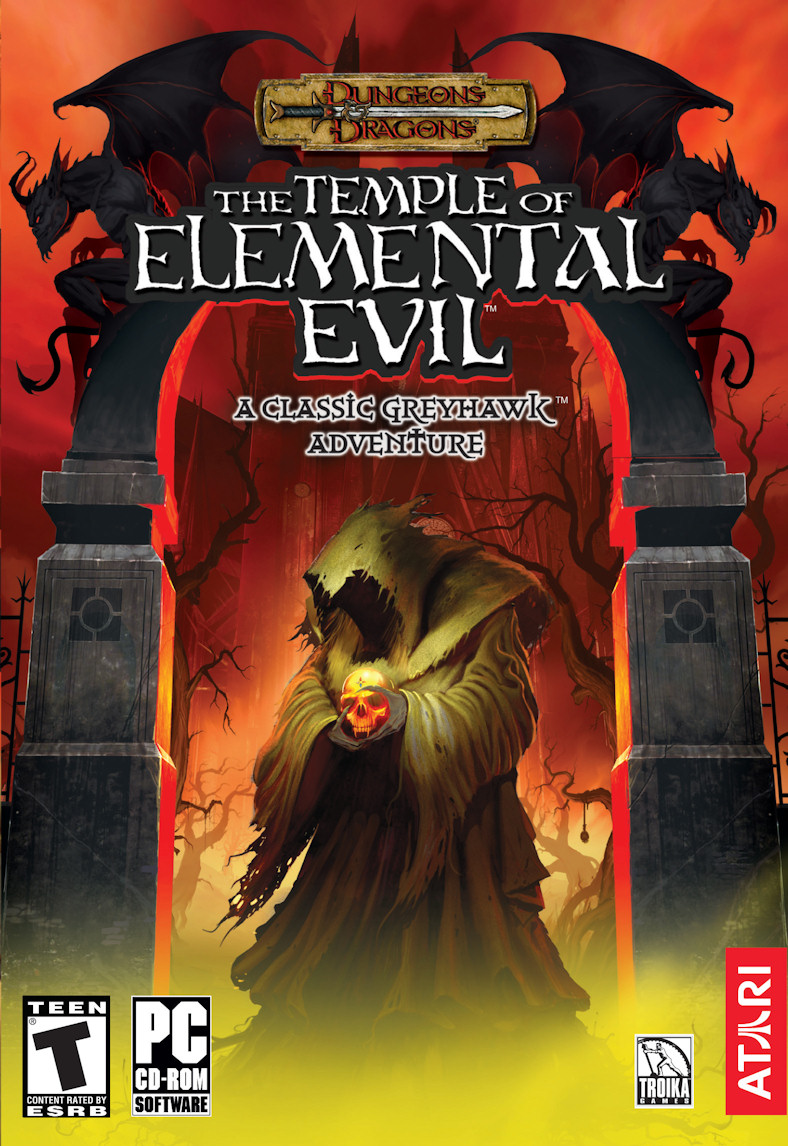The Temple of Elemental Evil Interview
-
Category: InterviewsHits: 9725

Article Index
Page 1 of 2
Ever since Troika Games announced that they were developing a CRPG based upon the 1st Edition AD&D adventure, The Temple of Elemental Evil, we've been extremely excited here at GameBanshee. Therefore, we wanted to know more about it, and were lucky enough to get several of our questions answered by Troika's Tim Cain. Here's what he had to say:GB: What are you shooting for in terms of recommended system requirements for the game?
Tim: Our min spec is a 700 Mhz processor, with 128 Meg of RAM and a 2nd generation 3D video card, running DirectX 8.1. We don't have a recommend spec yet, but the two biggest factors that improve performance are video cards with high fill rates and CPU's with lots of on-chip cache.
We keep a min spec machine running a current build of the game on a desk outside our conference room. The programmers regularly check to see how well the game is running on that machine, and the artists check their work as well. Our lead artist made many of the spell effects with variable fidelity, so they can run on lower end machines at low fidelity (read, fewer particles and emitters) and still look good.
GB: Can you give us a description of the engine you are using for the game? What sort of resolutions will the engine support?
Tim: Our engine uses pre-rendered backgrounds with 3D objects rendered on top. We store a clipping geometry for each map, so creatures and other objects can pass behind walls and scenery, making each map appear three-dimensional. This combination of pre-rendered background and 3D objects provides exquisitely detailed settings and lots of creature animations, along with creature customization with armor and other items. It's perfect for our game.
By default, the game runs at 800x600, but resolution can go up to 1280x1024. We support 16 or 32 bit depth. We kept the main interface pretty dynamic to handle these changes in resolution.
GB: How close is the game following the original ToEE module? Can we expect to see the demi-gods and other powerful beings from the original module in the game? Will veteran PnP players who are familiar with ToEE know what to expect as they make their way through the temple?
Tim: We are following the module pretty closely, and yes, some very powerful beings show up. But the module is very open-ended as written, and some details seem purposely vague. Many NPC's only have a few sentences describing them, and from that we have extrapolated their behaviors and their dialogs, and added lots of side quests for the players to explore. We also added starting vignettes, which are small maps that are explored before the party enters Hommlet, the module's main village and original starting point. These vignettes will provide a reason for the party to be traveling to Hommlet in the first place.
If someone has played the module already, the game will feel familiar, of course. But there will still be plenty of surprises, and in true Troika fashion, they shouldn't expect a single possible end game either.
GB: Will all 3E classes and races be available to play in ToEE? Can you explain the steps a player will initially take to create their characters and form a party?
Tim: We are supporting all of the 3E classes and races, with all of their class abilities and racial bonuses. If you play a bard, expect to perform your bardic music abilities and to see your bardic knowledge open up dialog possibilities. Expect your barbarian to rage, your cleric to gain domain powers and spells, and your elf to avoid paralyzation by ghouls. It's all in there. We are also adding some prestige classes, and time-permitting, some of the subraces as well, such as wood elves and tallfeet halflings.
Party creation is relatively straight-forward. You first pick a party alignment, which is the overall alignment for your player characters. You can then make up to five player characters, and their invidual alignments must be at most one step away from the party alignment. For example, if you pick a Chaotic Good party alignment, your player characters can be Chaotic Good, Neutral Good, Chaotic Neutral, or True Neutral. If you pick an Evil party alignment, your player characters can be Lawful Evil, Neutral Evil, or Chaotic Evil.
In addition, you cannot mix paladins and any evil characters. Even though a Lawful party alignment allows characters of Lawful Good, Lawful Neutral and Lawful Evil alignments, once you make a paladin character, the Lawful Evil alignment is no longer available. Similarly, once you make a Lawful Evil character, the paladin class choice is no longer available for the rest of the party.
Both individual and party alignments affect game play, from the starting vignette to the dialog options, quests and even followers that will be available. At Troika, we like to make every choice in our games matter.
GB: What is the maximum level player characters will be able to attain? Will most parties reach the highest level playing through the game normally, or will it take a smaller party or a solo character to get enough experience to reach this point?
Tim: We have a level cap of 10, and we expect that any size party (from 1 to 5) will be able to attain this level before the end of the game. However, since we are including the magic item creation feats, some players may opt to spend experience points to make their own magic items, which makes it hard to judge at which point any group will hit the cap. Even a first level wizard can start to scribe scrolls, so players will have individual control on their characters advancement from the start of the game.


